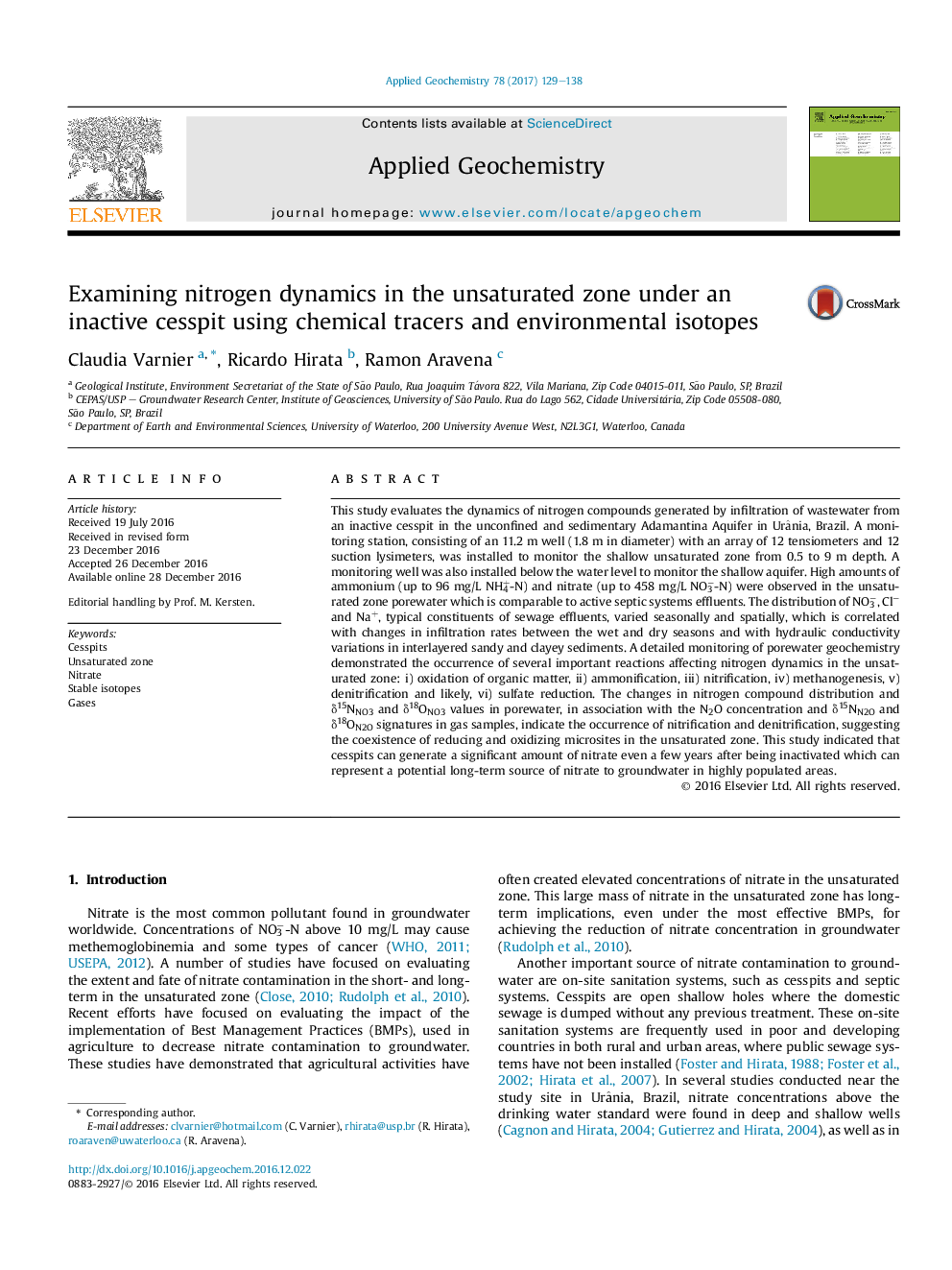| کد مقاله | کد نشریه | سال انتشار | مقاله انگلیسی | نسخه تمام متن |
|---|---|---|---|---|
| 5752676 | 1620213 | 2017 | 10 صفحه PDF | دانلود رایگان |
- Cesspits can continue to release nitrate even a few years after being inactive.
- Nitrification and denitrification can co-exist in the unsaturated zone.
- Porewater with 96Â mg/L NH4+-N and 458Â mg/L NO3â-N was observed below the cesspit.
This study evaluates the dynamics of nitrogen compounds generated by infiltration of wastewater from an inactive cesspit in the unconfined and sedimentary Adamantina Aquifer in Urânia, Brazil. A monitoring station, consisting of an 11.2 m well (1.8 m in diameter) with an array of 12 tensiometers and 12 suction lysimeters, was installed to monitor the shallow unsaturated zone from 0.5 to 9 m depth. A monitoring well was also installed below the water level to monitor the shallow aquifer. High amounts of ammonium (up to 96 mg/L NH4+-N) and nitrate (up to 458 mg/L NO3â-N) were observed in the unsaturated zone porewater which is comparable to active septic systems effluents. The distribution of NO3â, Clâ and Na+, typical constituents of sewage effluents, varied seasonally and spatially, which is correlated with changes in infiltration rates between the wet and dry seasons and with hydraulic conductivity variations in interlayered sandy and clayey sediments. A detailed monitoring of porewater geochemistry demonstrated the occurrence of several important reactions affecting nitrogen dynamics in the unsaturated zone: i) oxidation of organic matter, ii) ammonification, iii) nitrification, iv) methanogenesis, v) denitrification and likely, vi) sulfate reduction. The changes in nitrogen compound distribution and δ15NNO3 and δ18ONO3 values in porewater, in association with the N2O concentration and δ15NN2O and δ18ON2O signatures in gas samples, indicate the occurrence of nitrification and denitrification, suggesting the coexistence of reducing and oxidizing microsites in the unsaturated zone. This study indicated that cesspits can generate a significant amount of nitrate even a few years after being inactivated which can represent a potential long-term source of nitrate to groundwater in highly populated areas.
Journal: Applied Geochemistry - Volume 78, March 2017, Pages 129-138
